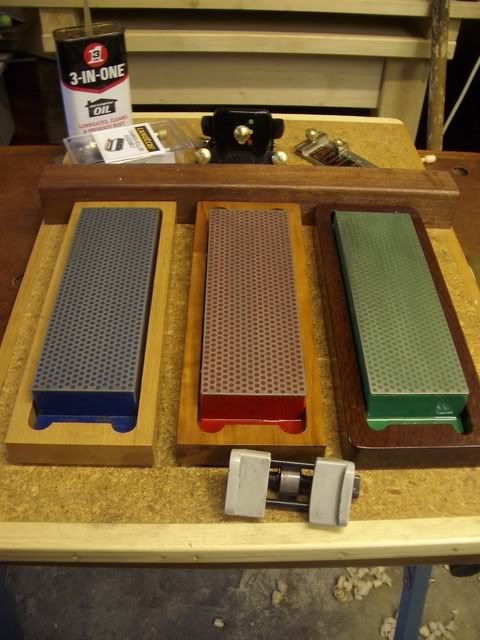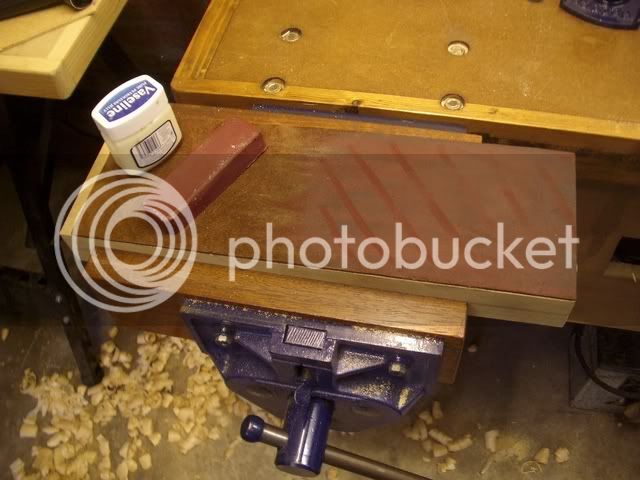EdK
Established Member
Hi,
I was after some info on sharpening stones.
I've been using japanese waterstones for a short while.
I use 800 / 1200 / 6000 King stones (from Axminster).
I've read that some of you are using the Spyderco 10k stone and was wondering if I should add this to the armoury?
Additionally how are you all flattening your waterstones?
I read the David C book where he recommends 12mm or 10mm float glass or a coarse diamond stone.
I have no way of re-grinding at the moment so have been using the 800 - not a good use of time !
Anyway I was thinking of either going and looking for an offcut of float glass from the local window companies or buying a diamond stone which I could use to flatten stones and also to re-grind edges.
I have been looking at buying a diamond stone online but have yet to come up with a decent option. I am guessing that the stone should be larger than the waterstones which rules out the single sided bench stones from DMT (Axminster again) - or is this not the case ? Would one be suitable ? Also what grit ? 240 ? 400 ? What does this correspond to with DMT stones ? Anyone using the Axminster own brand diamond stones?
Cheers for any help
Ed
I was after some info on sharpening stones.
I've been using japanese waterstones for a short while.
I use 800 / 1200 / 6000 King stones (from Axminster).
I've read that some of you are using the Spyderco 10k stone and was wondering if I should add this to the armoury?
Additionally how are you all flattening your waterstones?
I read the David C book where he recommends 12mm or 10mm float glass or a coarse diamond stone.
I have no way of re-grinding at the moment so have been using the 800 - not a good use of time !
Anyway I was thinking of either going and looking for an offcut of float glass from the local window companies or buying a diamond stone which I could use to flatten stones and also to re-grind edges.
I have been looking at buying a diamond stone online but have yet to come up with a decent option. I am guessing that the stone should be larger than the waterstones which rules out the single sided bench stones from DMT (Axminster again) - or is this not the case ? Would one be suitable ? Also what grit ? 240 ? 400 ? What does this correspond to with DMT stones ? Anyone using the Axminster own brand diamond stones?
Cheers for any help
Ed






